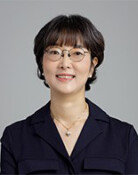No partisan politics or calculations in redrawing electoral districts
No partisan politics or calculations in redrawing electoral districts
Posted October. 31, 2014 08:45,
The Constitutional Court on Thursday ruled against the election law that allows large electoral districts have up to three times as much population as smaller ones. The top court said that the current demarcation of electoral districts is in violation of the principle of equal voting and that the population deviation should not exceed the ratio of 2 to 1. In other words, the court ruled that if the smallest electoral district has a population of 100,000, the largest one`s population should not surpass 200,000.
The Constitutional Court made it clear that despite the local autonomy and lawmaker`s representation of their home regions, these should not come before the equality of votes, the starting point of democracy. The court set the deadline for redefining electoral districts at the end of 2015. In the elections for the 20th National Assembly in 2016, about 60 electoral districts are supposed to be redefined, potentially causing the political landscape to be transformed.
In representational democracy, it is important how accurately voters` wills are reflected into political decision-makings. That three votes in urban areas are equivalent to one vote in rural regions significantly hurts the equality of votes. When the population of North and South Chungcheong provinces surpassed that of the Jeolla provinces in May for the first time, it was expected that the Chungcheong provinces would have about 300,000 more population that the Jeolla provinces in 2016, when the elections for the 20th National Assembly will take place. However, the Chungcheong provinces have 25 representatives in the parliament, compared to 30 from the Jeolla provinces.
According to a study by the National Election Commission, the top three regions in terms of population exceeding the upper population limit would be Gyeonggi Province with 16 electoral districts, Incheon with five and Seoul and South Chungcheong Province with three, respectively, assuming that the lower population limit of an electoral district is 139,000 and a 2-to-1 population deviation is applied. The number of electoral districts in densely populated urban areas will increase, while that of rural communities would decrease.
If so, the two main rival parties would have les seats in the parliament representing Gyeongsang and Jeolla provinces that are politically divided, while the Seoul and the surrounding areas will have more representation. This system would help decreased regionalism-based party politics. However, it could weaken the representation of rural areas. In particular, integration of rural electoral districts could benefit some local candidates while disadvantaging others. This could potentially spark calls for the introduction of large electoral districts integrating two to five electoral districts where multiple candidates would be elected. This system would help ease political regionalize, as it would prevent one party from monopolizing seats in a particular region.
These factors should comprehensively be taken into consideration, when the process of overhauling electoral districts that is supposed to be completed by the end of 2015 ahead of the parliamentary elections the following year. It is necessary to reform the electoral district system that would prevent gerrymandering and serve the original purpose of popular and regional representation system. Debates on an electoral district reform could intensify discussions about a constitutional amendment, including the introduction of a bicameral parliamentary system. In any case, the discussions should be transparent so that partisan politics or tricks could not distort the people`s will.







